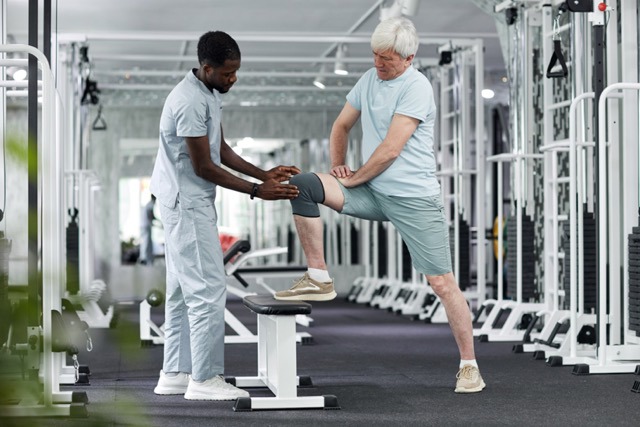Care ABC: I for incontinence
Incontinence affects millions of people worldwide, but only a few speak openly about it. Whether caused by age, illness or surgery, the uncontrolled loss of urine or stool can have a significant impact on quality of life. At the same time, it also poses major challenges for family members and caregivers.
How can care be designed in such a way that those affected retain their dignity? Which products and measures make everyday life easier? And what financial support is available for those affected?
In this article, you will learn everything you need to know about incontinence, from the causes and treatment options to valuable tips for carers and those affected - so that a self-determined and dignified life remains possible.
What is incontinence?
Incontinence refers to the inability to consciously retain urine or stool. While bladder weakness is particularly common in older people, it can also affect younger people - for example due to pregnancy, childbirth, obesity or neurological diseases.
Estimated 50% of all women will experience incontinence in their lifetime, making it a widespread but often taboo subject. However, there are numerous solutions that can help to regain control and make everyday life easier.
Types of incontinence
1. Urinary incontinence
Urinary incontinence occurs when the bladder muscles or nerves do not function properly, resulting in involuntary loss of urine. There are different forms:
Stress incontinence
- During physical exertion (e. e.g. coughing, sneezing, laughing, lifting) .
- Common after pregnancy or due to weakened pelvic floor muscles.
- Treatment: Pelvic floor exercises (Kegel exercises), physiotherapy, oestrogen therapy or surgery.
Urge incontinence (overactive bladder)
- Characterized by a sudden, strong urge to urinate with involuntary loss of urine.
- Causes include bladder infections, neurological diseases (e.g. Parkinson's disease, Alzheimer's disease, etc.), and other diseases. B. Parkinson's, Alzheimer's) or bladder irritation.
- Treatment: medication, bladder training, lifestyle adjustments and nerve stimulation.
Neurogenic bladder dysfunction
- Caused by nerve damage due to spinal cord injuries, multiple sclerosis, diabetes or strokes.
- Causes uncontrollable bladder contractions or urinary retention.
- Treatment: Catheterization, medication and bladder training.
overflow incontinence
- Occurs when the bladder is not completely emptied, resulting in constant dribbling of urine.
- Common in men with enlarged prostate or urethral stricture.
- Treatment: medication, catheters or surgical procedures.
2. Fecal incontinence
Stool incontinence occurs when bowel control is impaired and involuntary bowel movements occur. Common causes are:
- Weak pelvic floor (after childbirth or surgery)
- Chronic diarrhea or constipation
- Nerve Damage (e.g. due to diabetes, strokes, etc.). e.g. due to diabetes, strokes or spinal cord injuries)
- Irritable Bowel Syndrome (IBS) or inflammatory bowel disease (IBD)
Treatment options:
- Nutritional adjustments (fiber, adequate fluid intake)
- Pelvic floor training
- Intestinal management programs
- Surgical interventions for severe cases
Effective management of incontinence
Everyday tips for controlling incontinence
- Scheduled toilet visits:Regular visits to the toilet can help minimize urges and accidents.
- Bladder & Bowel Training: Deliberately delaying the urge to urinate can improve control.
- Pelvic Floor Training: Strengthening the muscles that support the bladder and bowels.
- Nutrition & hydration: Avoiding bladder irritants such as caffeine, alcohol and spicy foods.
- Hygiene & Skincare: Use pH-neutral cleansers and protective creams to prevent skin irritation.
Aids for incontinence care
- Absorbent products: pads, pants or diapers for discreet security.
- Catheter & Urinal Systems: For people with severe incontinence or limited mobility.
- Bed pads & waterproof protective covers: Important for the management of nocturnal incontinence.
Incontinence is a challenge - both for those affected and for family caregivers. However, with proper care,high-quality aids and an empathetic approach can make everyday life much easier. No one needs to be ashamed of this.
What can you do specifically?
- Protect skin health - Gentle cleansing and skin care prevent irritation.
- Use the right incontinence products - individual solutions increase comfort and safety.
- Promoting independence - Small adjustments in everyday life help those affected to remain independent.
- Use professional support - experts offer valuable tips and solutions.
- Apply for financial aid - Health insurance companies take over often costs for incontinence products and treatments.
Nursing is not only about physical support, but also emotional support. Everyone deserves dignified and respectful care - without shame and with maximum quality of life.
Do you need professional support or high-quality incontinence products?
Visits noracaresfor customized solutions!
- Bubble Training - A technique for gradually extending the time between toilet visits.
- Pelvic Floor Training (Kegel Exercises) - Muscle exercises to improve bladder control.
- Absorbent Products - protective products such as pads and pants.
- Catheter - A urinary diversion aid for severe incontinence.
- Neurogenic Bubble - Bladder dysfunction due to nerve damage.
- Continence Advisor:in - Incontinence management specialist.






